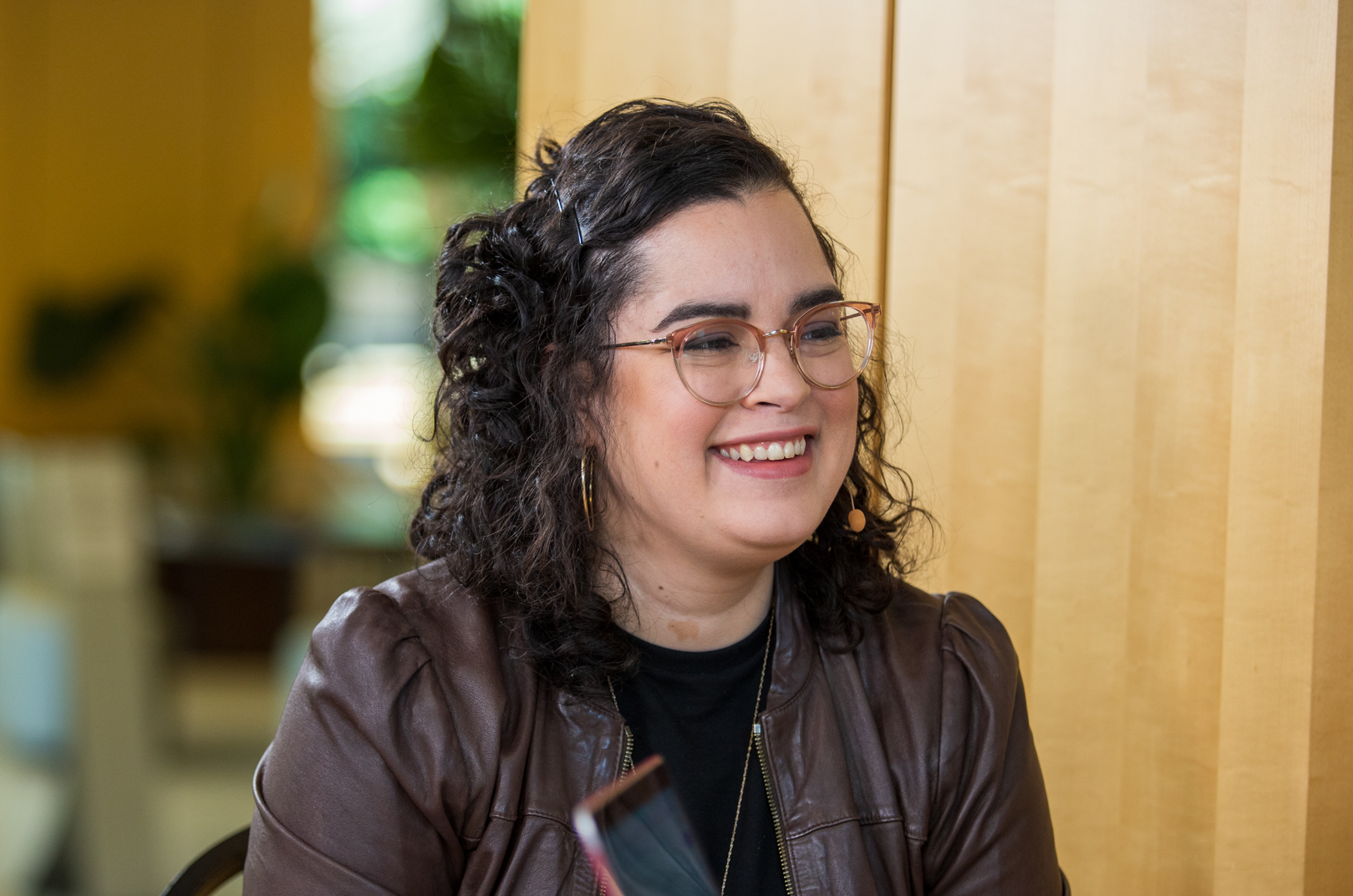 WOMEN IN TECH
WOMEN IN TECH
 WOMEN IN TECH
WOMEN IN TECH
 WOMEN IN TECH
WOMEN IN TECH
There are many stories hidden in data, and companies are always searching for insights. Revealing those stories often falls to the data science teams who build the models and creates the algorithms which seek out the wisdom within the data.
But, as changing the point of view changes any narrative, the way in which data is viewed can change the entire story it tells. As artificial intelligence and machine learning become more embedded in everyday life, telling an inclusive story instead of one ethnocentric point-of-view is essential.
“In a local sense, we’re optimizing and doing a great job, but what are the global consequences of those decisions?” asked Lillian Carrasquillo (pictured), insights manager at Spotify Technology SA.
Carrasquillo spoke with Sonia Tagare, host of theCUBE, SiliconANGLE Media’s mobile livestreaming studio, during the recent Women in Data Science conference at Stanford University.
They discussed Carrasquillo’s diverse educational background and how she believes that adding arts to the science, technology, engineering, and math equation of STEM could solve the crisis of diversity in data science. Plus, they talk about how differences in background and culture in the Spotify personalization team positively influence individual feed recommendations, producing a prediction accuracy that can surprise even the data scientists who designed them.
This week theCUBE spotlights Carrasquillo in its Women in Tech feature.
Telling a data science story that is globally relevant requires teams made up of more than stereotypical STEM geeks, according to Carrasquillo. “Cross disciplinary education is really the only way we’re going to be able to make those connections to understand what kind of second order effects we’re having based on the decisions of parameters for a model,” she said. “Instead of thinking about STEM, we should be talking about STEAM, which adds the arts education in there.”
Carrasquillo speaks from experience. Although she was a math scholar in high school, she chose to attend liberal arts bastion Smith College rather than a technology-focused institution.
While at Smith, a professor told Carrasquillo he considered studying math not as a purely theoretical discipline but as a way to train the brain to build a foundation of diverse knowledge to approach a problem. That inspired her to choose an eclectic course load.
“I have an undeclared major in Latin American Studies, and I studied neuroscience and quantum physics for non-experts, and film class; I even took a poetry writing class,” she said. “The experience really stuck with me because it was about pushing myself outside of my own boundaries.”
A semester studying math in Budapest was another cultural experience that molded Carrasquillo’s view of the world, adding up to an undergraduate experience that was far from traditional for a mathematics major. “I just found it really challenging and satisfying to be able to push myself to think in different ways,” Carrasquillo said. “I don’t know if I would have had the same opportunity at a more technical school.”
After graduation, Carrasquillo entered the workforce as a data analyst for social media marketing company BzzAgent Inc. After a few years of real-world data science experience, she decided to deepen her understanding of the field and enrolled in the Professional Science Master’s course at Worcester Polytechnic Institute, specializing in industrial mathematics and taking courses in machine learning, artificial intelligence in design and mathematical modeling.
After being awarded her master’s degree, Carrasquillo worked as a data scientist for several companies, including Twitter Inc., where she moved toward her current specialty in entertainment personalization. At Spotify, she is part of the personalization team, with the mission to make sure that the recommendations delivered in a user’s daily mix, discover weekly and year-end wrap stories are spot on.
“We collaborate across different product areas to understand what are the foundational data sets and the foundational machine learning tools that are needed to be able to create features that a user can actually experience in the app,” Carrasquillo said. The idea is to gain a deep understanding of user needs by bringing in research not only from data scientists, but from the product side and from the engineering teams.
Sometimes the results surprise even her. While scrolling through her personal Spotify feed, she noticed an unexpected genre was highly rated. “I was like, ‘Oh, that’s kind of weird,’” she said, laughing. “I don’t consider myself a country fan. Why would the home screen recommend women in country music to me?”
Turns out that the algorithm understood her better than she understood herself. When she clicked through and saw the list, “Those were all artists that I’ve been listening to a lot, but I just had not formed an identity [around] country music,” she said. “I listened to it, and it got me to the point where I was realizing I really actually do like country music when the stories are centered around women.”
Creating an AI that can make such accurate predictions takes a strong, cross-disciplinary, collaborative team, according to Carrasquillo. Creating that team starts with inclusive recruitment, but it is also about company message and culture.
“It’s not just about diversity, it’s also about making people feel like this is where they should be on a personal level,” she said.
Spotify has a team focused on just this task. “They’re really pushing all of us … to really think about the decisions and the way that we talk about things, all of these micro-decisions that we make, and how that creates an inclusive environment,” Carrasquillo said.
Carrasquillo has a simple message for individuals who may feel like Silicon Valley or the technology industry doesn’t have a place for them: “Because you’re different, your voice is needed even more,” she said. “Your voice matters.”
Here’s the complete video interview, part of SiliconANGLE’s and theCUBE’s coverage of the Women in Data Science conference:
THANK YOU